3D Structure of the Ras Al Hadd Oceanic Dipole
Abstract
:1. Introduction
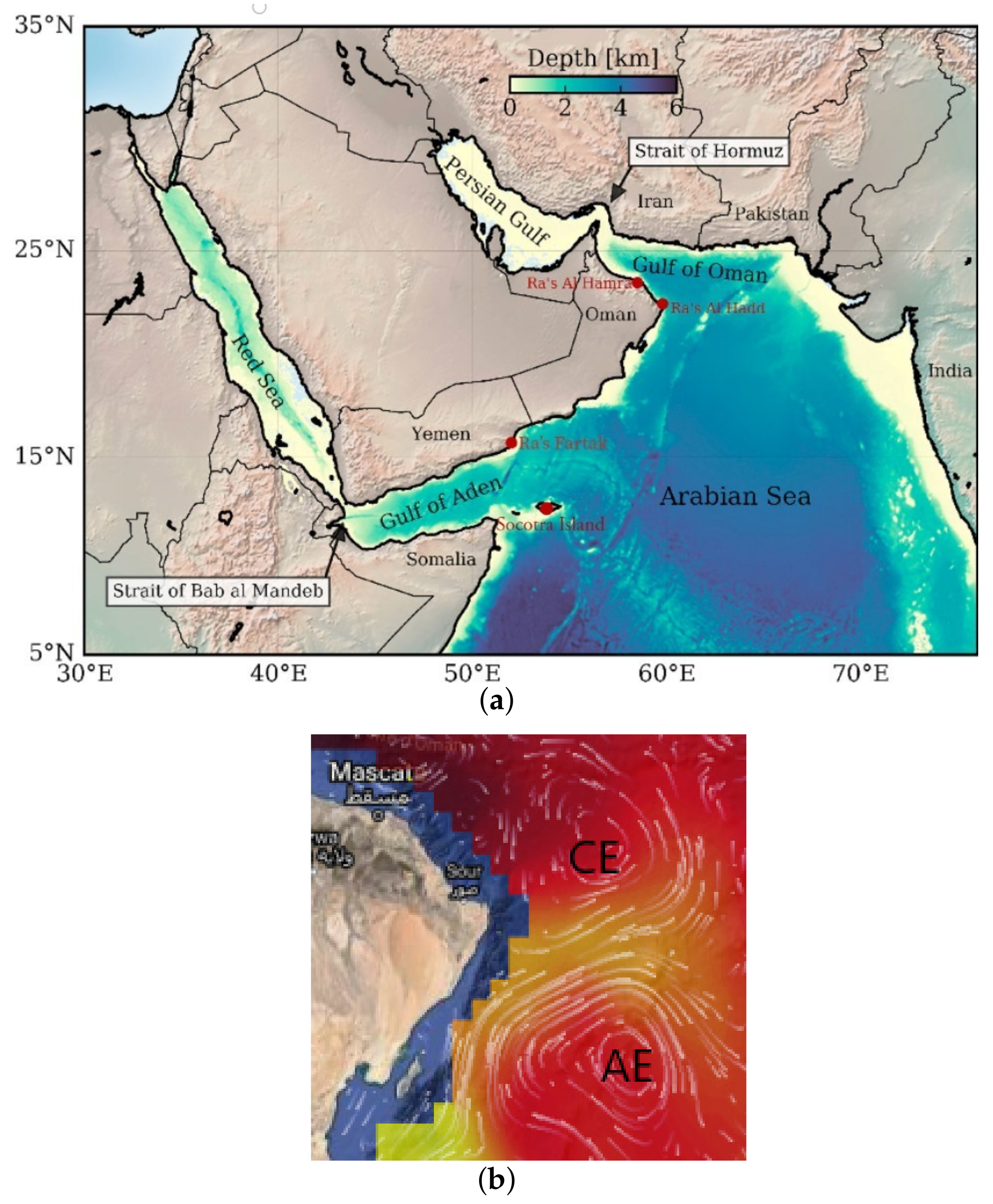
2. Materials and Methods
2.1. ARGO Floats
2.2. Eddy Tracking
2.3. Colocalization Methodology
2.4. 3D Composite Eddy Computing
2.5. Possible Instabilities in the RAH Dipole
- Gravitational (or static) instability when the stratification is unstable (negative Brunt–Vaisala ).
- Inertial instability when the absolute vorticity ( + ) is negative.
- Pure symmetric when the vertical component of the EPV negatively dominates the EPV, due to a large vertical velocity shear.
3. Results
3.1. Colocalization of the RAH Dipole and Water Masses Signature
3.2. Hydrological and Dynamical Structures of the RAH Dipole
3.3. Surface Signature and Ekman Effects
3.4. Possible Instabilities in the RAH Dipole
4. Discussion
4.1. Colocalization of the RAH Dipole and Water Masses Signature
4.2. The Hydrological and Dynamical Composite Structure
4.3. Surface Signature and Ekman Effects
- If both eddies are N–S oriented, the vertical velocity will be doubled.
- If both eddies are E–W, the beta and eddy deformations will be perpendicular. This leads to a quadripolar deformation by the addition of both effects.
- Mode 2, induced by the vortex–vortex interactions, is smaller than mode 1 (30% smaller).
4.4. Possible Instabilities in the RAH Dipole
5. Conclusions
- Near the surface (top 100 m), fresh and cold waters were observed in both eddies.
- Beneath this layer (between 100 and 200 m depths), ASHSW (salty water) was found in the AE.
- In the subsurface (between 200 and 500 m), PGW (salty and warm water) was trapped in both eddies.
- The CE was surface-intensified and the AE was subsurface-intensified.
- Both eddies were Gaussian in shape; the AE was slightly larger than the CE, leading to intensification of the angular geostrophic and cyclostrophic velocities of the CE.
- The AE had a deeper signature than the CE.
- Vertical frontogenesis processes were deep-reaching in both eddies and intensified for the CE due to the surface nature and diffusive convection in its core.
- Nonlinear and linear Ekman pumping dominated in the CE due to its stronger interaction with the atmosphere.
- Symmetric, baroclinic, and barotropic instabilities coexisted near the surface (top 200 m). They were intensified for the CE. The AE seemed to be a more stable structure.
- Our results are in good agreement with previous studies. However, a major limitation of this study is the axisymmetric assumption. This assumption does not take into consideration the distortion/deformation of eddies. The latter is important in related stratification adjustments due to potential vorticity conservation.
- Numerical modeling is necessary to examine the stability of these oceanic eddies and their interactions with winds during a long time period (a few months).
Author Contributions
Funding
Institutional Review Board Statement
Informed Consent Statement
Data Availability Statement
Acknowledgments
Conflicts of Interest
Appendix A
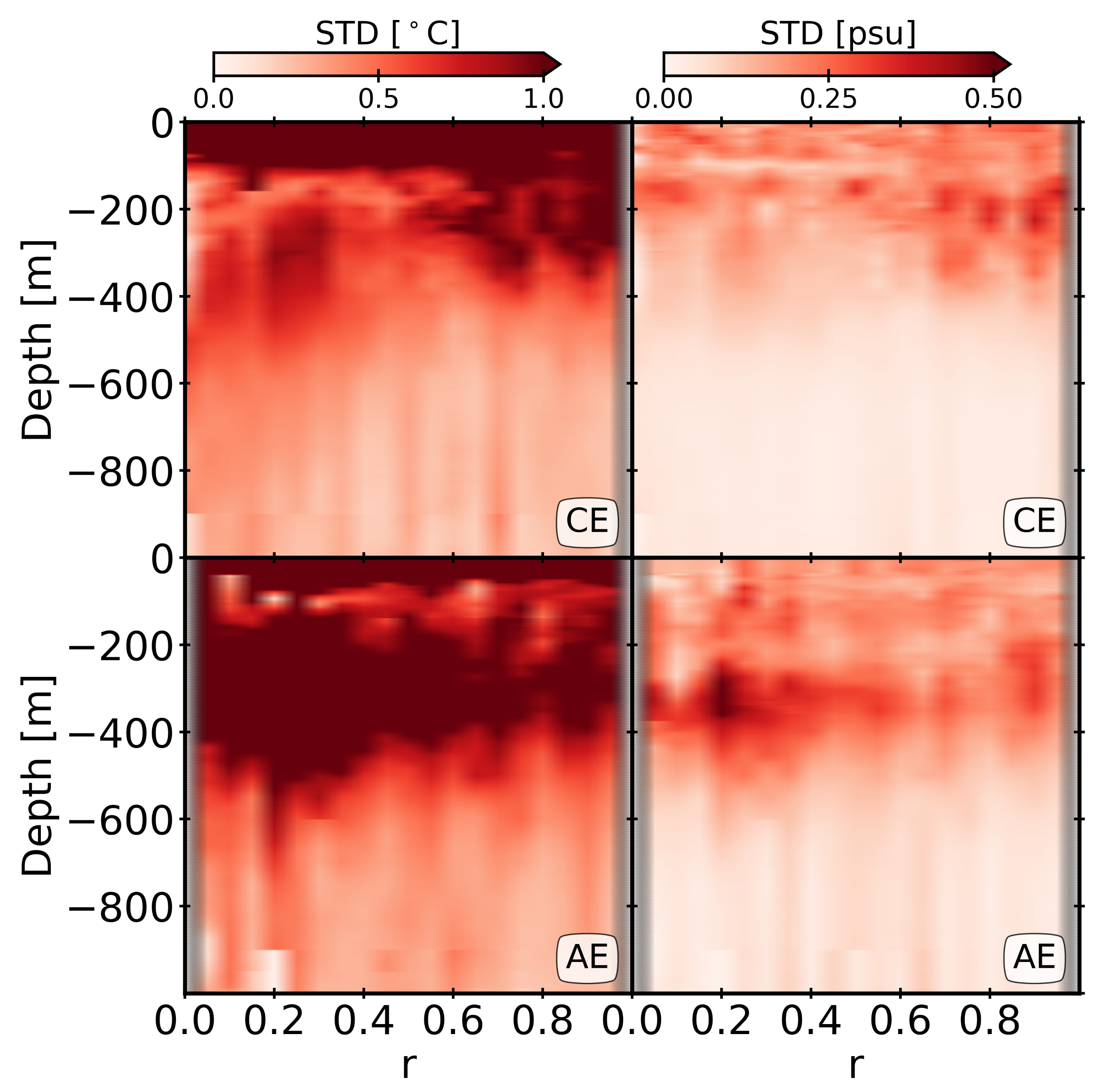
References
- Flagg, C.N.; Kim, H.S. Upper ocean currents in the northern Arabian Sea from shipboard ADCP measurements collected during the 1994–1996 U.S. JGOFS and ONR programs. Deep Sea Res. Part II Top. Stud. Oceanogr. 1998, 45, 1917–1959. [Google Scholar] [CrossRef]
- Wang, Z.; DiMarco, S.F.; Jochens, A.E.; Ingle, S. High salinity events in the northern Arabian Sea and Sea of Oman. Deep Sea Res. Part I Oceanogr. Res. Pap. 2013, 74, 14–24. [Google Scholar] [CrossRef]
- De Marez, C.; L’Hégaret, P.; Morvan, M.; Carton, X. On the 3D structure of eddies in the Arabian Sea. Deep Sea Res. Part I Oceanogr. Res. Pap. 2019, 150, 103057. [Google Scholar] [CrossRef]
- Ayouche, A.; De Marez, C.; Morvan, M.; L’Hegaret, P.; Carton, X.; Le Vu, B.; Stegner, A. Structure and Dynamics of the Ras al Hadd Oceanic Dipole in the Arabian Sea. Oceans 2021, 2, 105–125. [Google Scholar] [CrossRef]
- Johns, W.E.; Jacobs, G.A.; Kindle, J.C.; Murray, S.P.; Carron, M. Arabian Marginal Seas and Gulfs; Technical Report; Naval Research Laboratory, Oceanography Division, Stennis Space Center: Hancock County, MS, USA, 1999. [Google Scholar]
- Lee, C.M.; Jones, B.H.; Brink, K.H.; Fischer, A.S. The upper-ocean response to monsoonal forcing in the Arabian Sea: Seasonal and spatial variability. Deep Sea Res. Part II Top. Stud. Oceanogr. 2000, 47, 1177–1226. [Google Scholar] [CrossRef]
- Currie, R. Circulation and upwelling off the coast of south-east Arabia. Oceanol. Acta 1992, 15, 43–60. [Google Scholar]
- L’Hégaret, P.; de Marez, C.; Morvan, M.; Meunier, T.; Carton, X. Spreading and Vertical Structure of the Persian Gulf and Red Sea Outflows in the Northwestern Indian Ocean. J. Geophys. Res. Oceans 2021, 126, e2019JC015983. [Google Scholar] [CrossRef]
- Emeis, K.C.; Anderson, D.M.; Doose, H.; Kroon, D.; Schulz-Bull, D. Sea-Surface Temperatures and the History of Monsoon Upwelling in the Northwest Arabian Sea during the Last 500,000 Years. Quat. Res. 1995, 43, 355–361. [Google Scholar] [CrossRef]
- Ilicak, M.; Özgökmen, T.M.; Johns, W.E. How does the Red Sea outflow water interact with Gulf of Aden Eddies? Ocean Model. 2011, 36, 133–148. [Google Scholar] [CrossRef]
- L’Hégaret, P.; Lacour, L.; Carton, X.; Roullet, G.; Baraille, R.; Corréard, S. A seasonal dipolar eddy near Ras Al Hamra (Sea of Oman). Ocean Dyn. 2013, 63, 633–659. [Google Scholar] [CrossRef]
- Bower, A.S.; Hunt, H.D.; Price, J.F. Character and dynamics of the Red Sea and Persian Gulf outflows. J. Geophys. Res. Oceans 2000, 105, 6387–6414. [Google Scholar] [CrossRef]
- Bower, A.S.; Furey, H.H. Mesoscale eddies in the Gulf of Aden and their impact on the spreading of Red Sea Outflow Water. Prog. Oceanogr. 2012, 96, 14–39. [Google Scholar] [CrossRef] [Green Version]
- Morvan, M.; L’Hégaret, P.; de Marez, C.; Carton, X.; Corréard, S.; Baraille, R. Life cycle of mesoscale eddies in the Gulf of Aden. Geophys. Astrophys. Fluid Dyn. 2020, 114, 631–649. [Google Scholar] [CrossRef]
- Fratantoni, D.M.; Bower, A.S.; Johns, W.E.; Peters, H. Somali Current rings in the eastern Gulf of Aden. J. Geophys. Res. Oceans 2006. [Google Scholar] [CrossRef] [Green Version]
- Böhm, E.; Morrison, J.M.; Manghnani, V.; Kim, H.S.; Flagg, C.N. The Ras al Hadd Jet: Remotely sensed and acoustic Doppler current profiler observations in 1994–1995. Deep Sea Res. Part II Top. Stud. Oceanogr. 1999, 46, 1531–1549. [Google Scholar] [CrossRef]
- Argo. Argo Float Data and Metadata from Global Data Assembly Centre (Argo GDAC); SEANOE: Issy-les-Moulineaux, France, 2022. [Google Scholar] [CrossRef]
- McDougall, T.J.; Barker, P.M. Getting started with TEOS-10 and the Gibbs Seawater (GSW) oceanographic toolbox. Scor/Iapso WG 2011, 127, 1–28. [Google Scholar]
- Vu, B.L.; Stegner, A.; Arsouze, T. Angular momentum eddy detection and tracking algorithm (AMEDA) and its application to coastal eddy formation. J. Atmos. Ocean. Technol. 2018, 35, 739–762. [Google Scholar] [CrossRef]
- Meyers, G.; Donguy, J.R.; Bailey, R. Geostrophic Transports of the Major Current Systems in the Tropical Indian and Pacific Oceans; International WOCE Newslette, Design and Print Centre of the University of Southampton: Southampton, UK, 1996. [Google Scholar]
- Ni, Q.; Zhai, X.; Wang, G.; Hughes, C.W. Widespread Mesoscale Dipoles in the Global Ocean. J. Geophys. Res. Oceans 2020, 125, e2020JC016479. [Google Scholar] [CrossRef]
- Hoskins, B.J.; Draghici, I.; Davies, H.C. A new look at the ω-equation. Q. J. R. Meteorol. Soc. 1978, 104, 31–38. [Google Scholar] [CrossRef]
- Hoskins, B.J. The role of potential vorticity in symmetric stability and instability. Q. J. R. Meteorol. Soc. 1974, 100, 480–482. [Google Scholar] [CrossRef]
- De Marez, C.; Meunier, T.; Morvan, M.; L’Hégaret, P.; Carton, X. Study of the stability of a large realistic cyclonic eddy. Ocean Model. 2020, 146, 101540. [Google Scholar] [CrossRef]
- Ayouche, A.; Charria, G.; Carton, X.; Ayoub, N.; Theetten, S. Non-Linear Processes in the Gironde River Plume (North-East Atlantic): Instabilities and Mixing. Front. Mar. Sci. 2021, 8, 701773. [Google Scholar] [CrossRef]
- Ayouche, A.; Carton, X.; Charria, G.; Theettens, S.; Ayoub, N. Instabilities and vertical mixing in river plumes: Application to the Bay of Biscay. Geophys. Astrophys. Fluid Dyn. 2020, 114, 650–689. [Google Scholar] [CrossRef]
- Laxenaire, R.; Speich, S.; Stegner, A. Evolution of the Thermohaline Structure of One Agulhas Ring Reconstructed from Satellite Altimetry and Argo Floats. J. Geophys. Res. Oceans 2019, 124, 8969–9003. [Google Scholar] [CrossRef] [Green Version]
- Fu, L.L.; Qiu, B. Low-frequency variability of the North Pacific Ocean: The roles of boundary- and wind-driven baroclinic Rossby waves. J. Geophys. Res. Oceans 2002, 107, 13-1–13-10. [Google Scholar] [CrossRef]
- Kumar, S.P.; Prasad, T.G. Formation and spreading of Arabian Sea high-salinity water mass. J. Geophys. Res. Oceans 1999, 104, 1455–1464. [Google Scholar] [CrossRef]
- Assassi, C.; Morel, Y.; Vandermeirsch, F.; Chaigneau, A.; Pegliasco, C.; Morrow, R.; Colas, F.; Fleury, S.; Carton, X.; Klein, P.; et al. An index to distinguish surface- and subsurface-intensified vortices from surface observations. J. Phys. Oceanogr. 2016, 46, 2529–2552. [Google Scholar] [CrossRef]
- Stegner, A.; Vu, B.L.; Dumas, F.; Ghannami, M.A.; Nicolle, A.; Durand, C.; Faugere, Y. Cyclone-Anticyclone Asymmetry of Eddy Detection on Gridded Altimetry Product in the Mediterranean Sea. J. Geophys. Res. Oceans 2021, 126, e2021JC017475. [Google Scholar] [CrossRef]
- Roullet, G.; Klein, P. Cyclone-Anticyclone Asymmetry in Geophysical Turbulence. Phys. Rev. Lett. 2010, 104, 218501. [Google Scholar] [CrossRef]
- Chu, X.; Chen, G.; Qi, Y. Periodic Mesoscale Eddies in the South China Sea. J. Geophys. Res. Oceans 2019, 125, e2019JC015139. [Google Scholar] [CrossRef]
- Pilo, G.S.; Oke, P.R.; Coleman, R.; Rykova, T.; Ridgway, K. Patterns of Vertical Velocity Induced by Eddy Distortion in an Ocean Model. J. Geophys. Res. Oceans 2018, 123, 2274–2292. [Google Scholar] [CrossRef]
- Gaube, P.; Chelton, D.B.; Samelson, R.M.; Schlax, M.G.; O’Neill, L.W. Satellite observations of mesoscale eddy-induced Ekman pumping. J. Phys. Oceanogr. 2015, 45, 104–132. [Google Scholar] [CrossRef]
- Wang, Y.; Zhang, H.R.; Chai, F.; Yuan, Y. Impact of mesoscale eddies on chlorophyll variability off the coast of Chile. PLoS ONE 2018, 13, 1–13. [Google Scholar] [CrossRef]
- Cornec, M.; Laxenaire, R.; Speich, S.; Claustre, H. Impact of Mesoscale Eddies on Deep Chlorophyll Maxima. Geophys. Res. Lett. 2021, 48, e2021GL093470. [Google Scholar] [CrossRef]
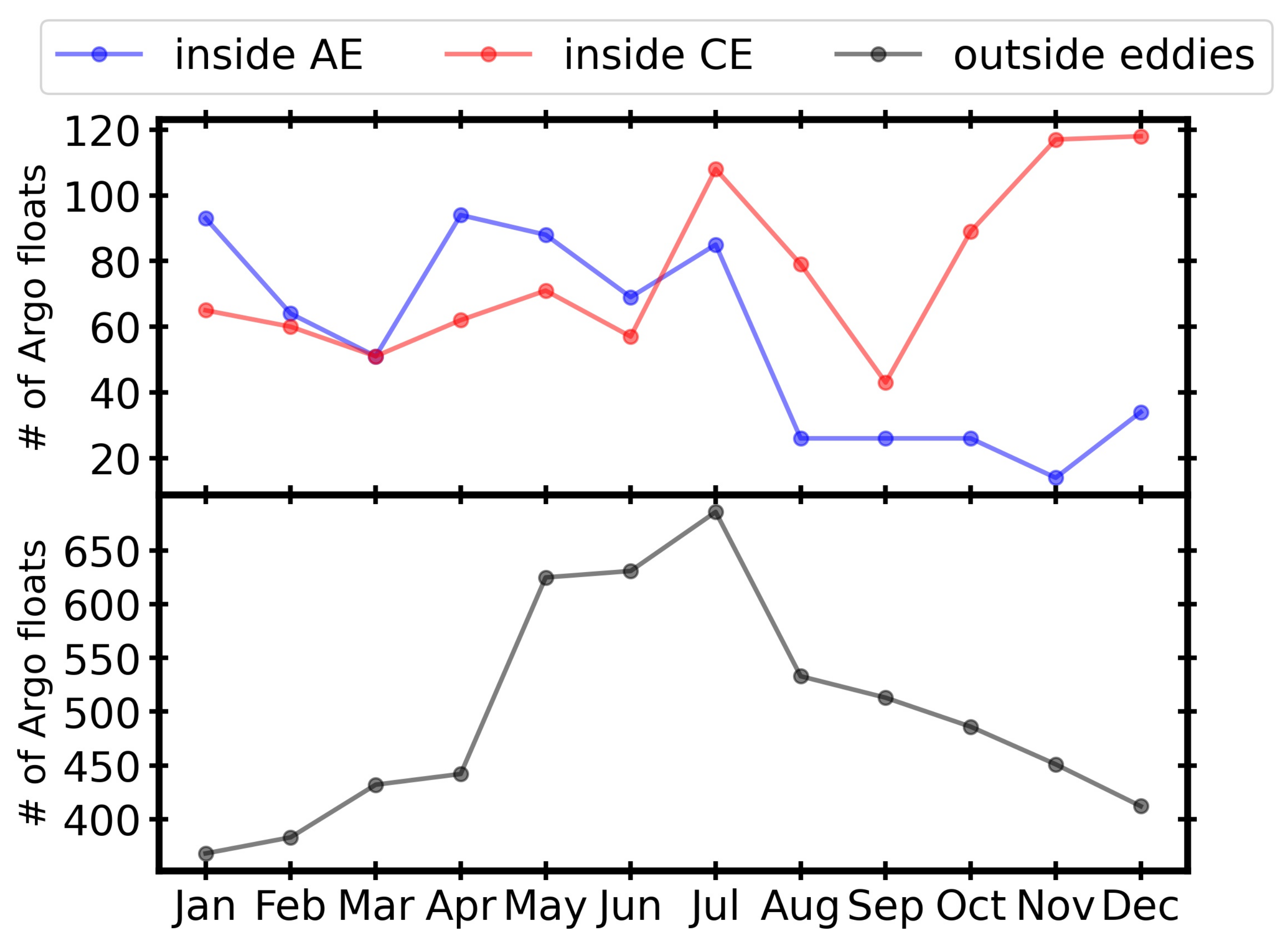

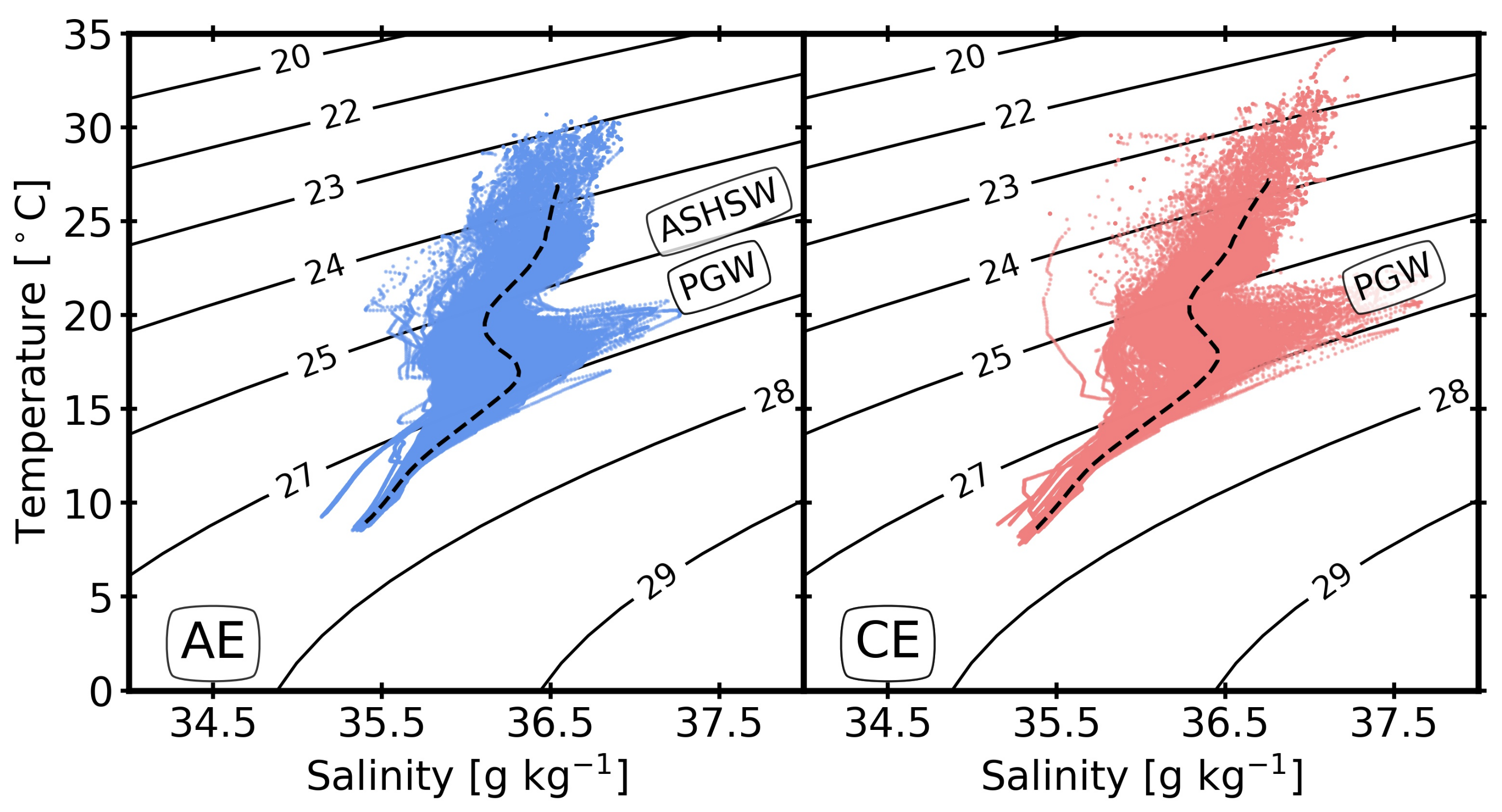
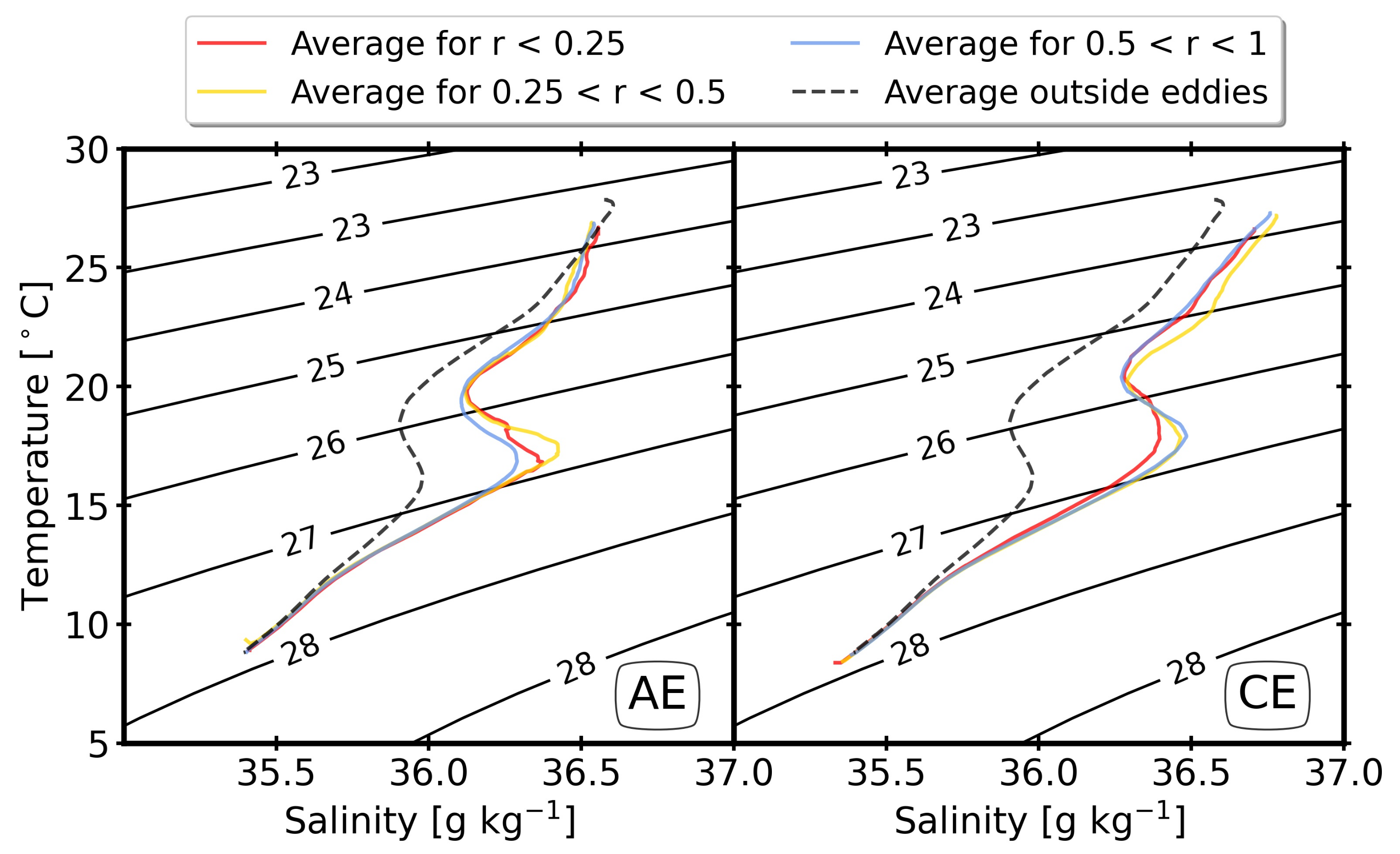

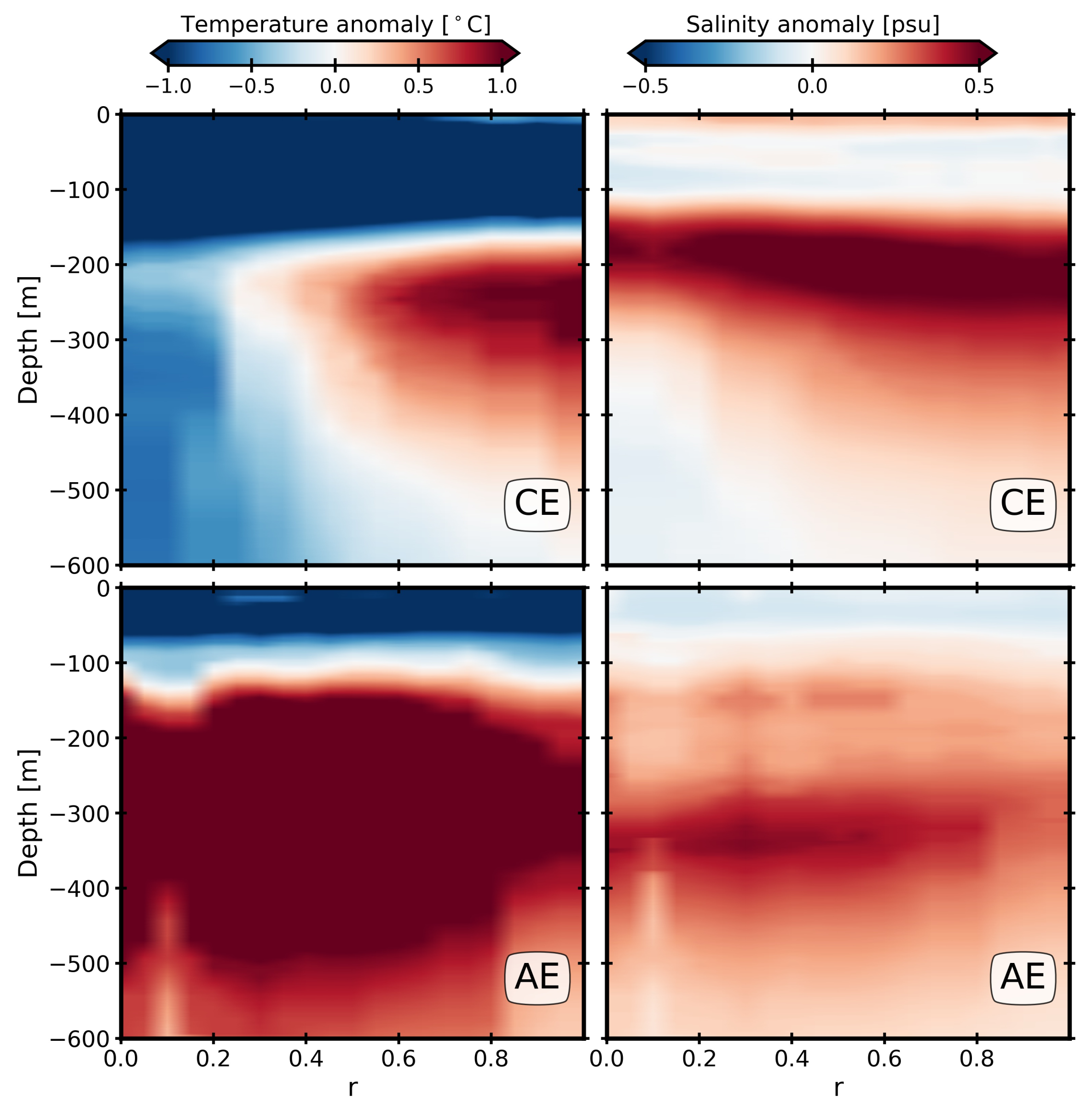
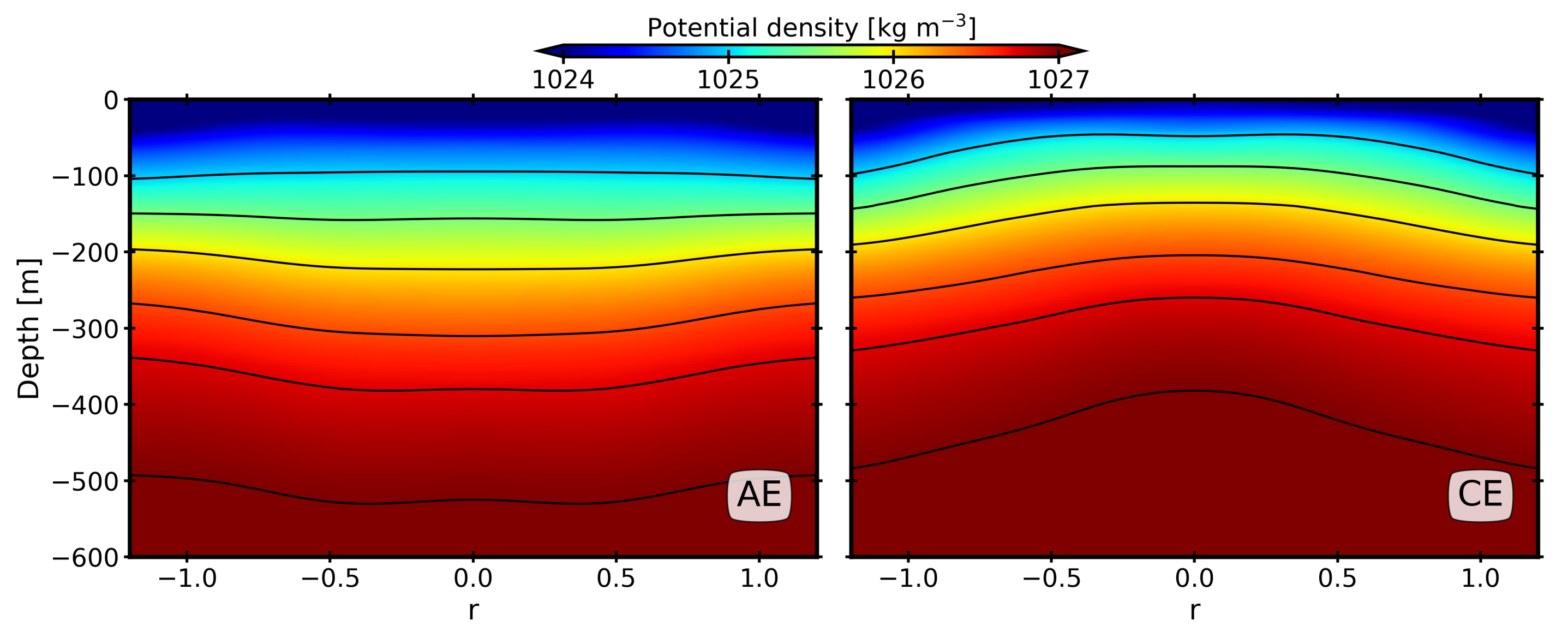
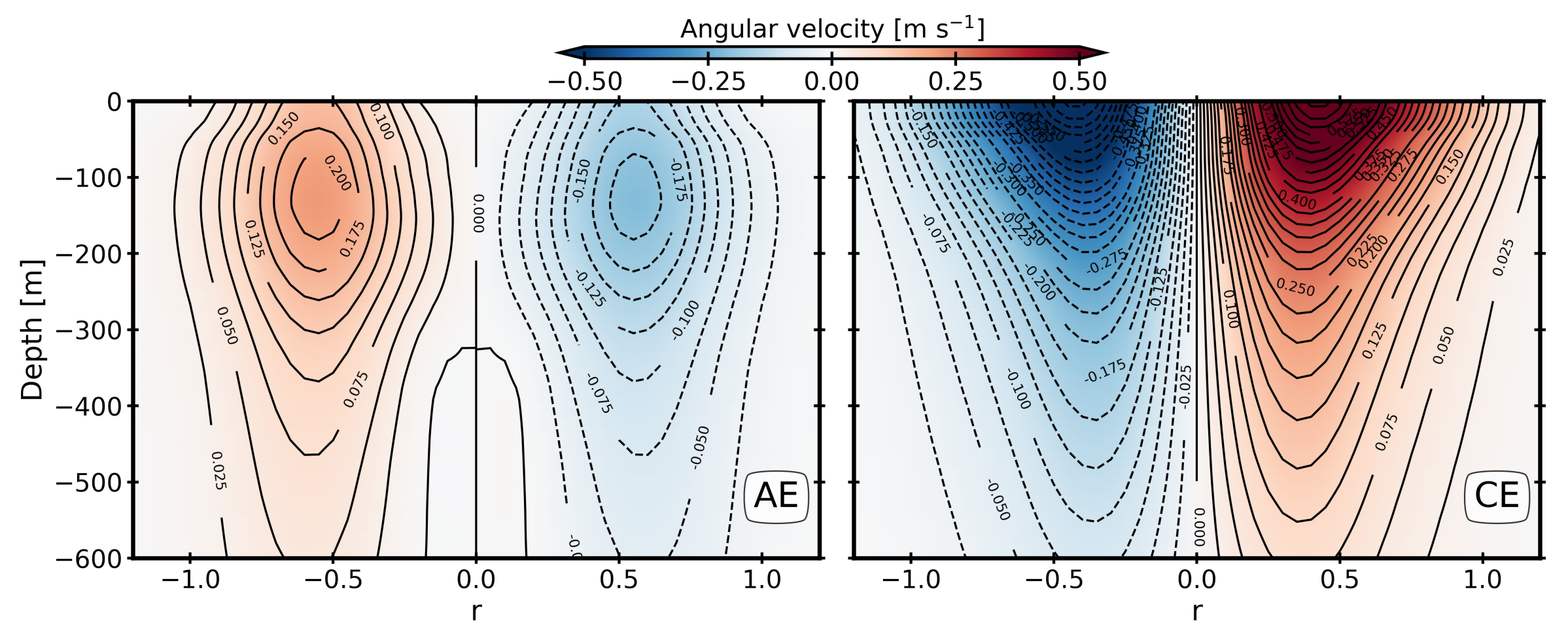
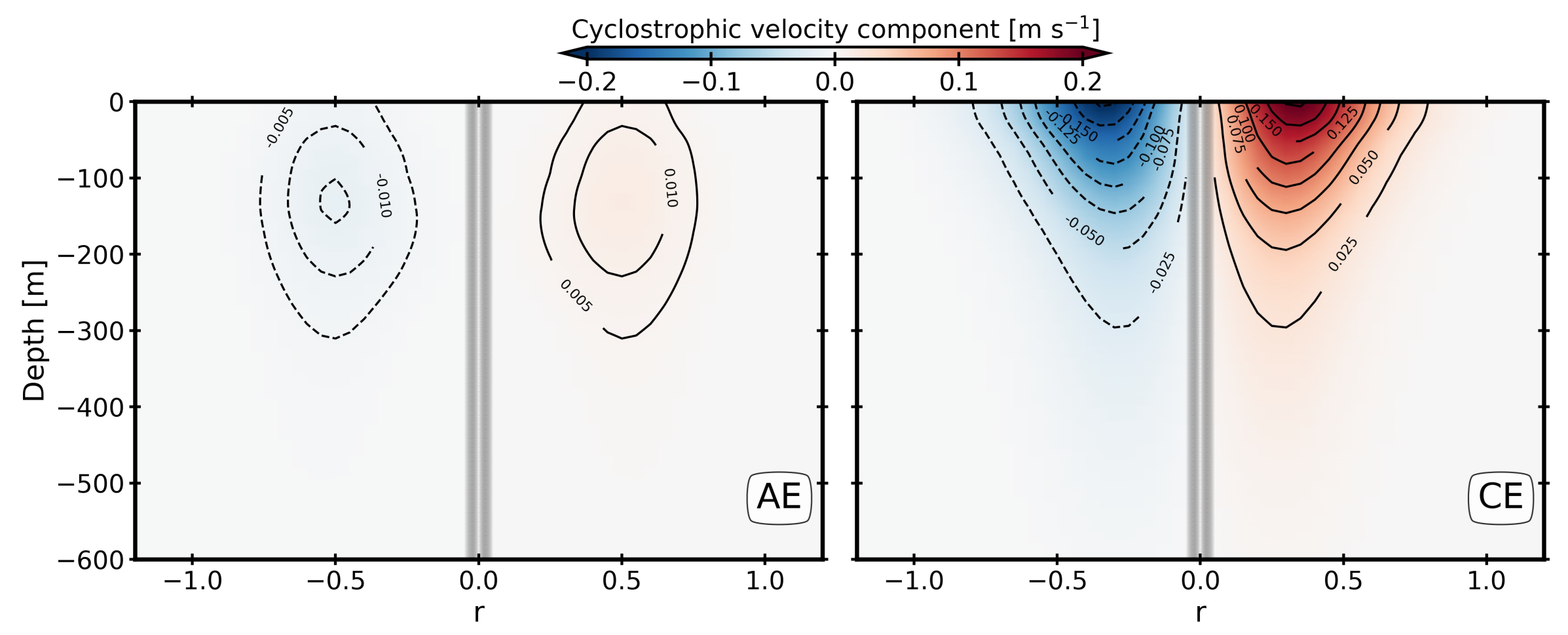


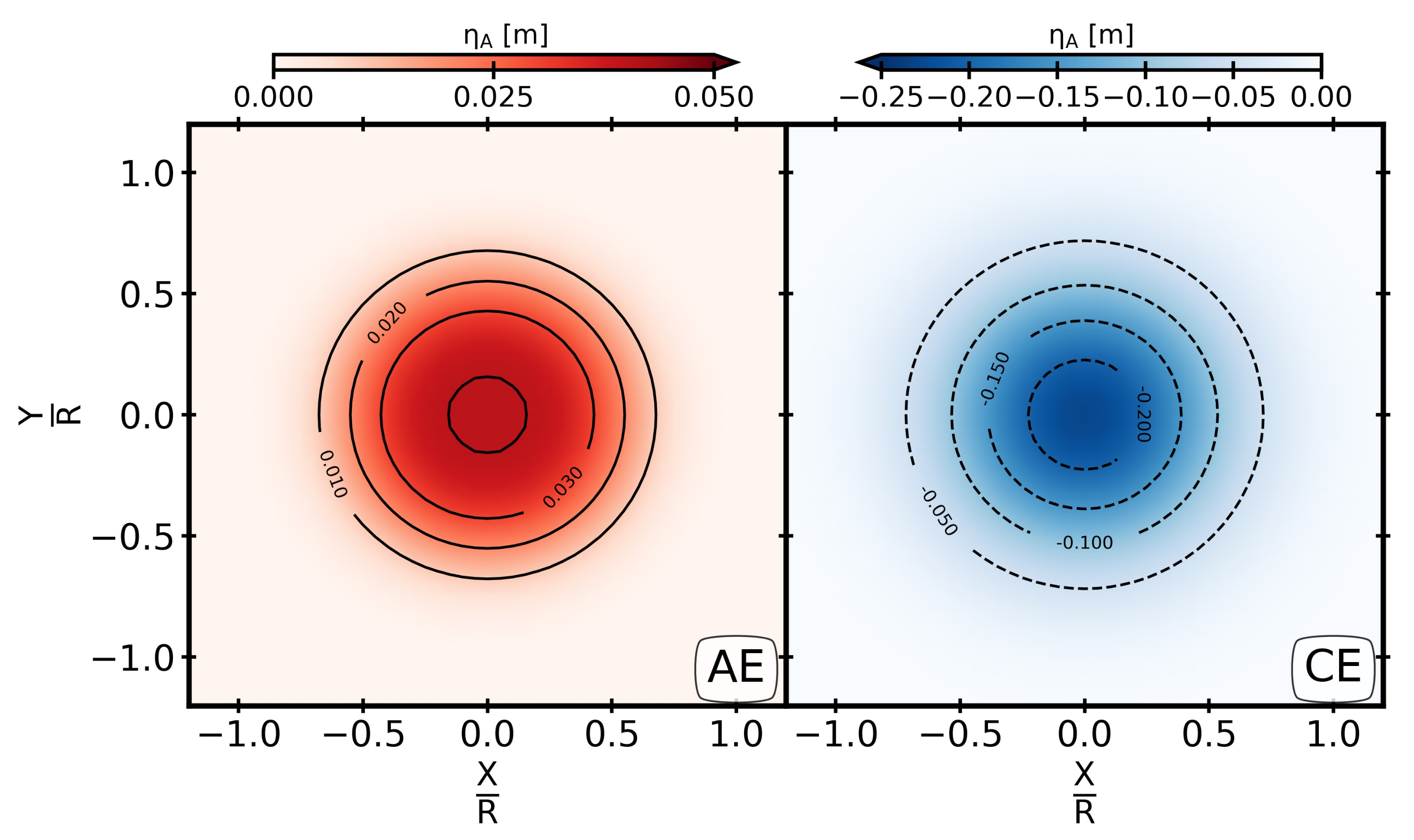
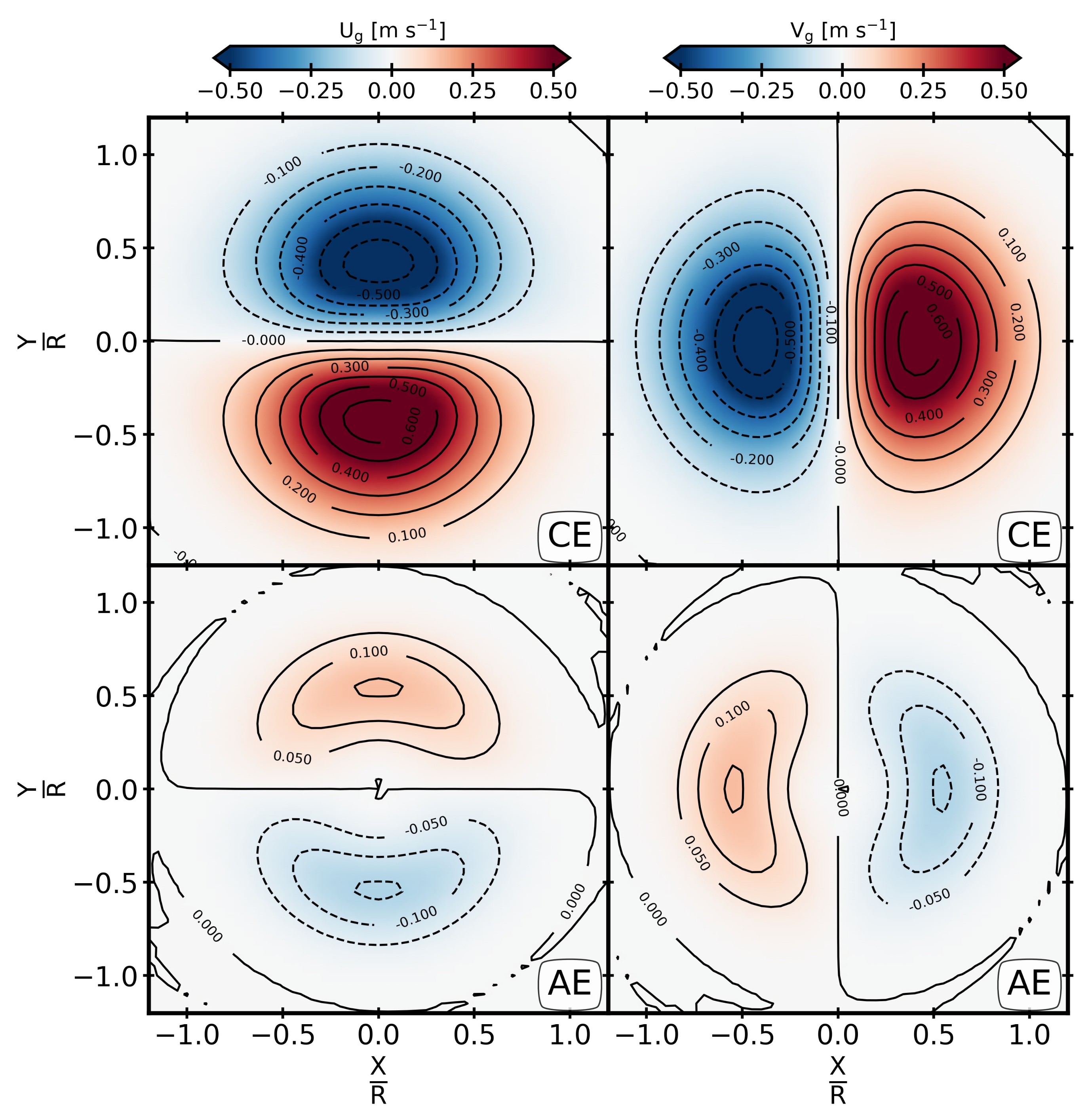

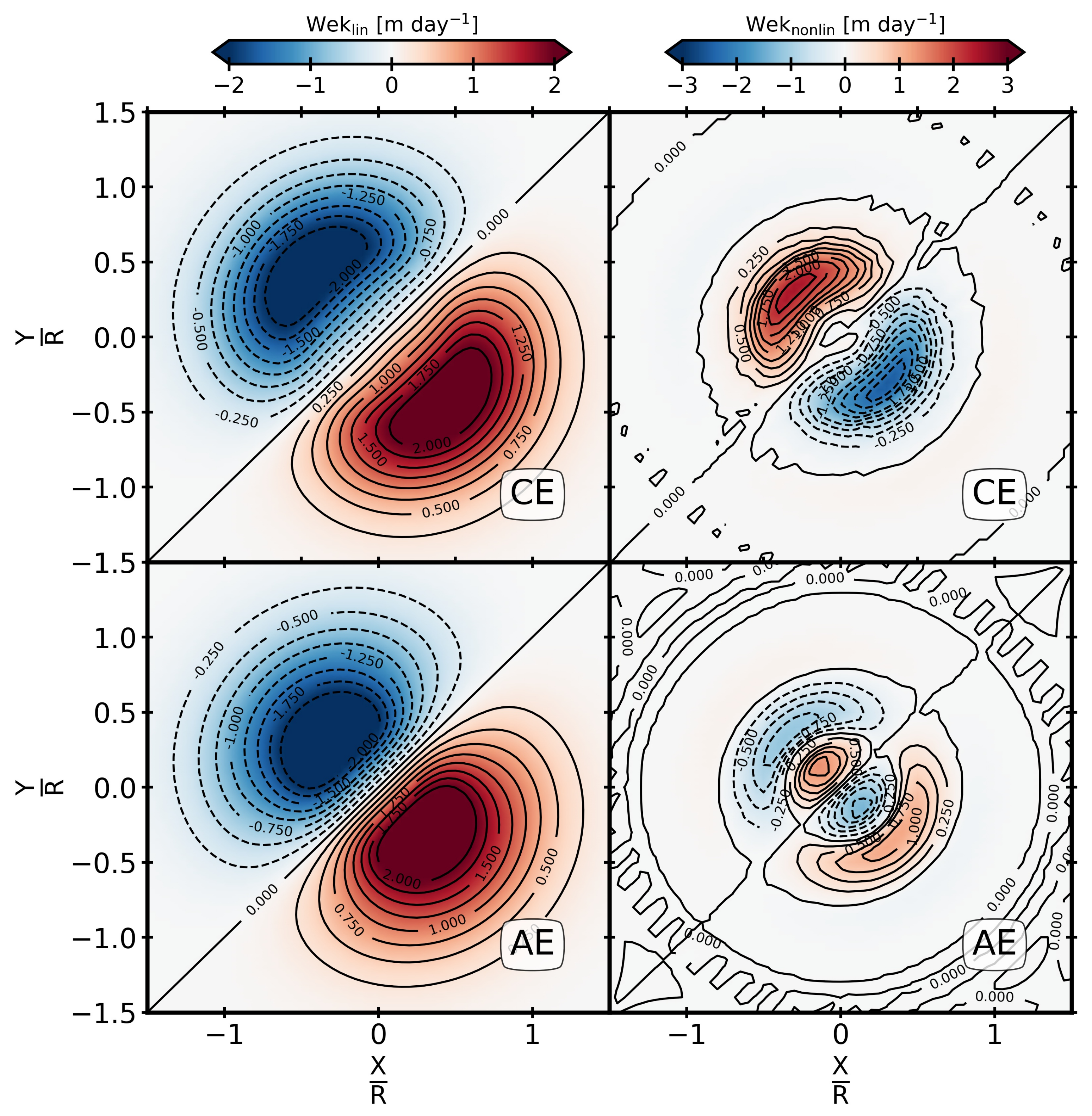

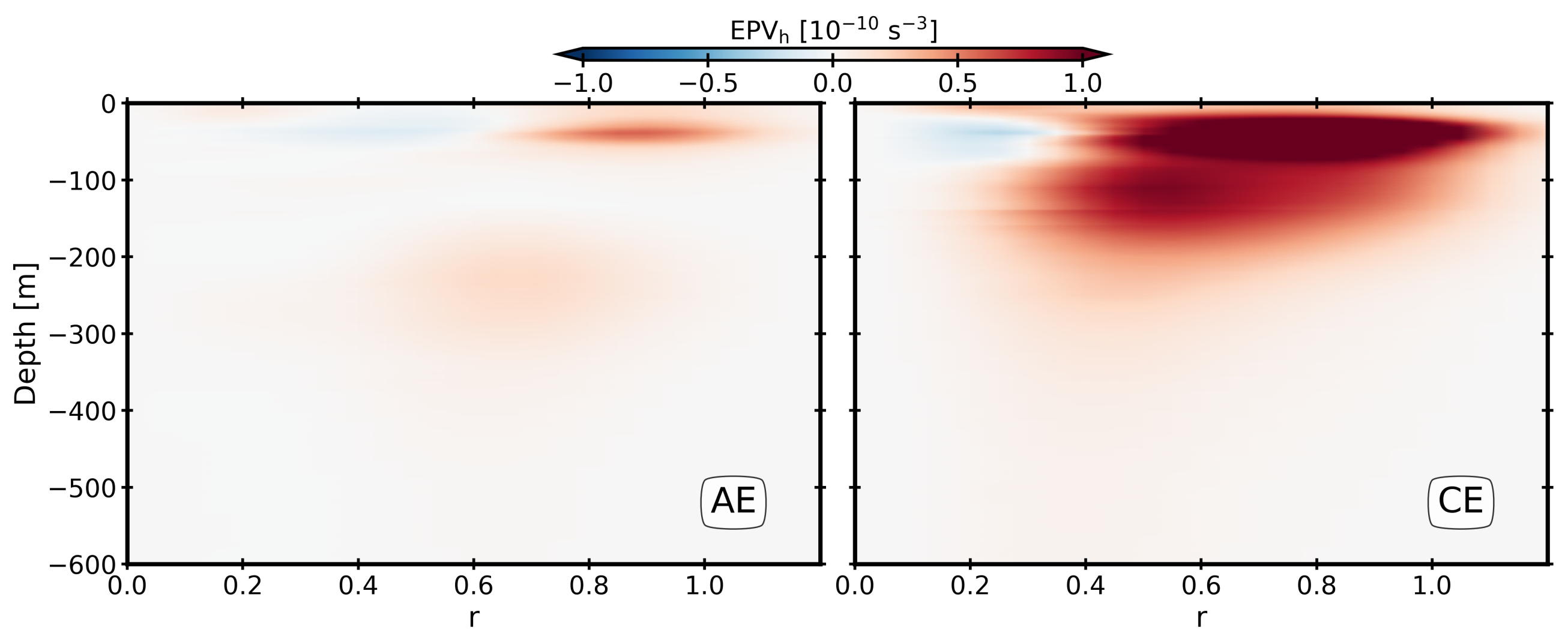

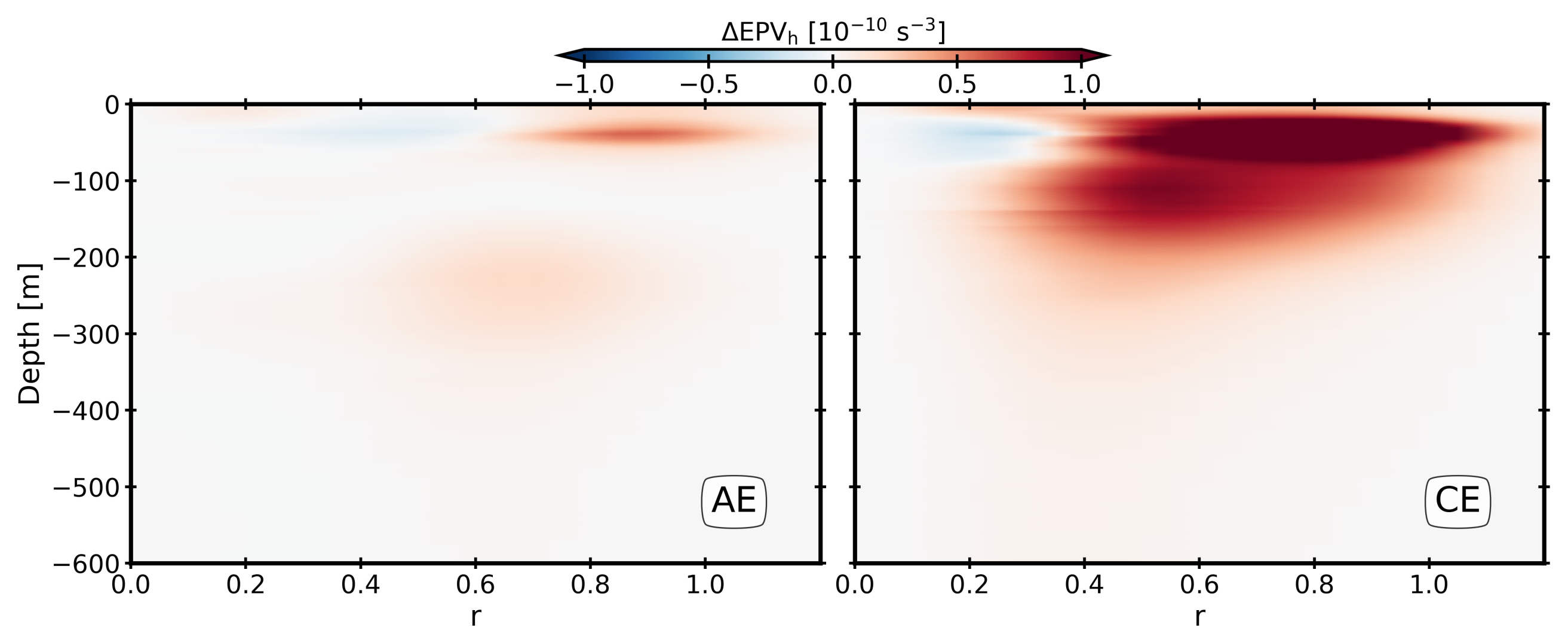
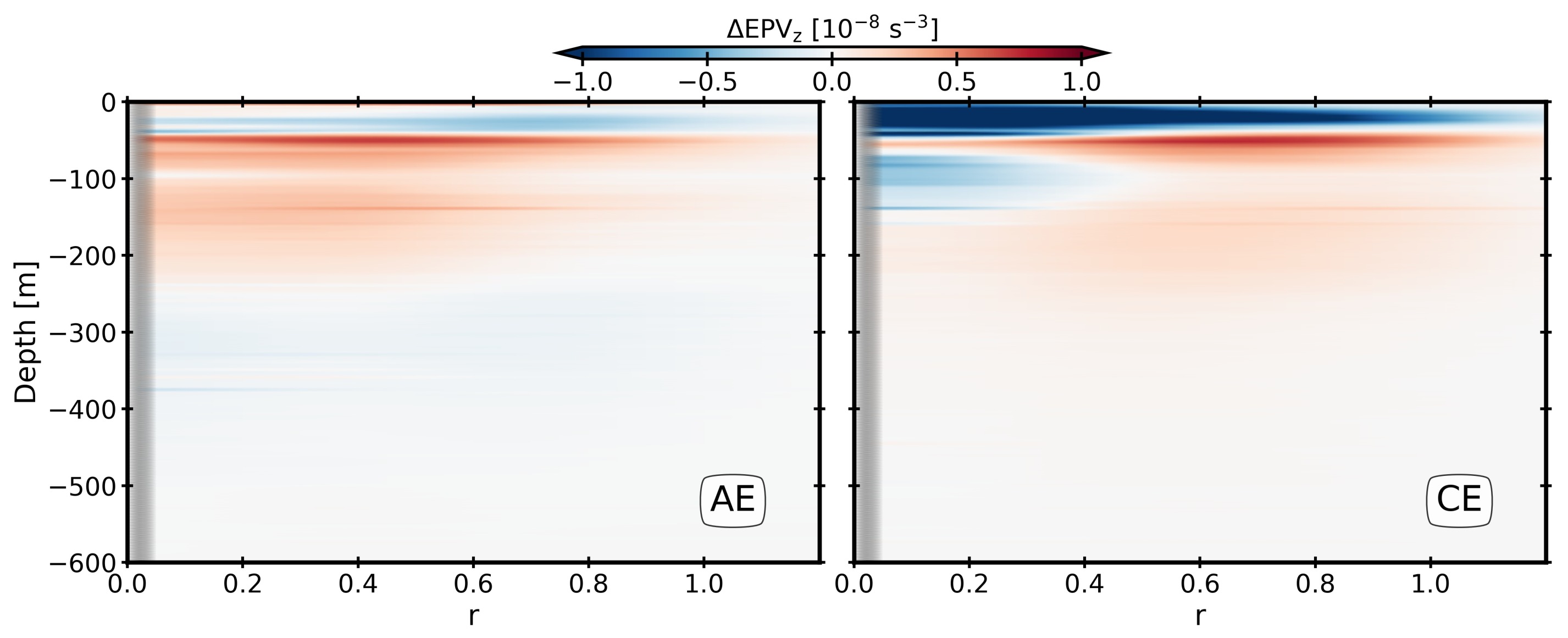
| Eddies | |||
|---|---|---|---|
| AE | 34 | 102 | 384 |
| CE | 105 | 198 | 526 |
| Instability EPV & Criteria |
|---|
| Symmetric & |
| Barotropic & horizontal sign shifts of |
| Baroclinic & vertical sign shifts of |
Publisher’s Note: MDPI stays neutral with regard to jurisdictional claims in published maps and institutional affiliations. |
© 2022 by the authors. Licensee MDPI, Basel, Switzerland. This article is an open access article distributed under the terms and conditions of the Creative Commons Attribution (CC BY) license (https://creativecommons.org/licenses/by/4.0/).
Share and Cite
Bennani, Y.; Ayouche, A.; Carton, X. 3D Structure of the Ras Al Hadd Oceanic Dipole. Oceans 2022, 3, 268-288. https://doi.org/10.3390/oceans3030019
Bennani Y, Ayouche A, Carton X. 3D Structure of the Ras Al Hadd Oceanic Dipole. Oceans. 2022; 3(3):268-288. https://doi.org/10.3390/oceans3030019
Chicago/Turabian StyleBennani, Yassine, Adam Ayouche, and Xavier Carton. 2022. "3D Structure of the Ras Al Hadd Oceanic Dipole" Oceans 3, no. 3: 268-288. https://doi.org/10.3390/oceans3030019
APA StyleBennani, Y., Ayouche, A., & Carton, X. (2022). 3D Structure of the Ras Al Hadd Oceanic Dipole. Oceans, 3(3), 268-288. https://doi.org/10.3390/oceans3030019







